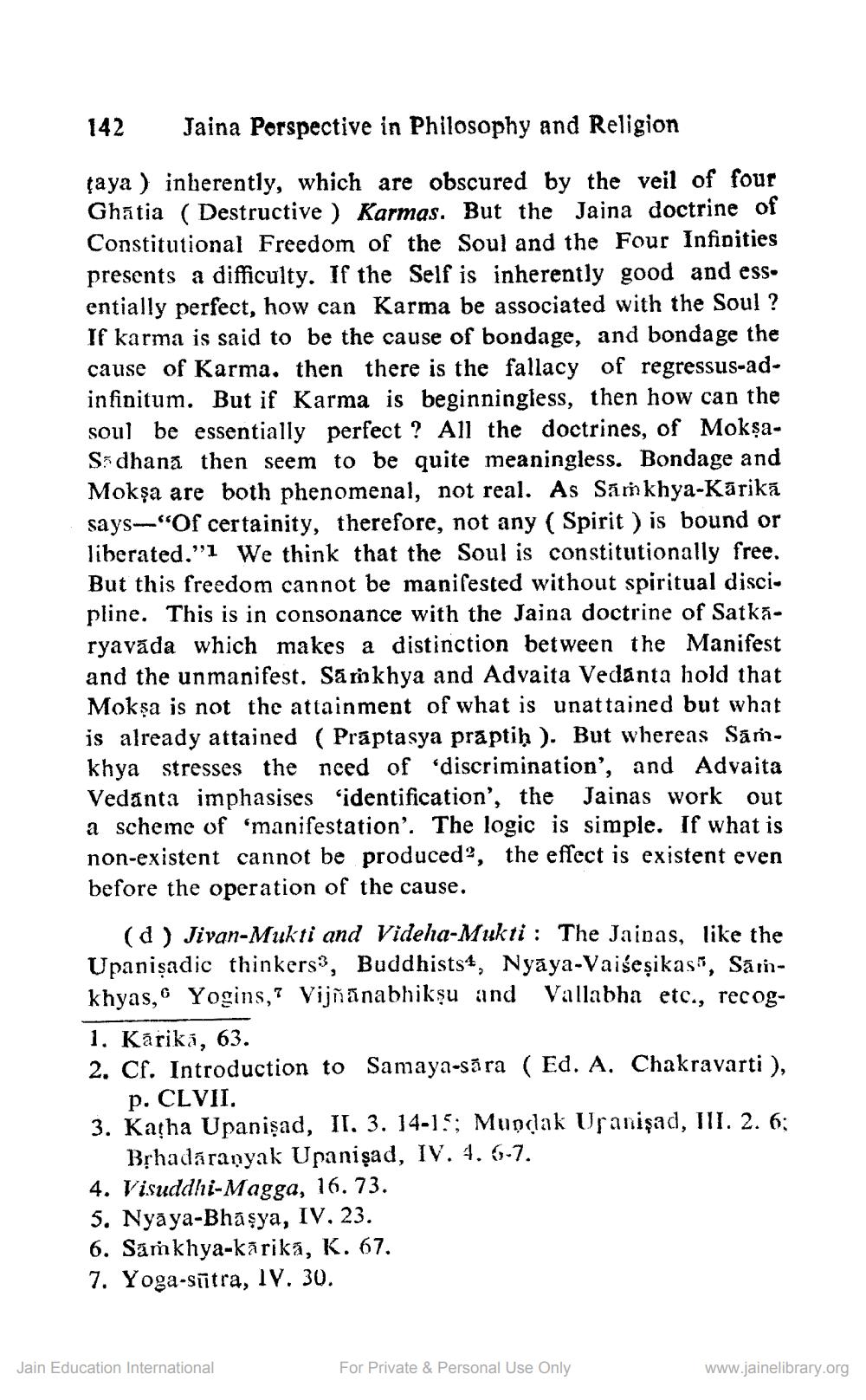________________
142
Jaina Perspective in Philosophy and Religion
taya ) inherently, which are obscured by the veil of four Ghātia (Destructive ) Karmas. But the Jaina doctrine of Constitutional Freedom of the Soul and the Four Infinities presents a difficulty. If the Self is inherently good and ess. entially perfect, how can Karma be associated with the Soul ? If karma is said to be the cause of bondage, and bondage the cause of Karma. then there is the fallacy of regressus-adinfinitum. But if Karma is beginningless, then how can the soul be essentially perfect? All the doctrines, of MokşaS dhana then seem to be quite meaningless. Bondage and Mokşa are both phenomenal, not real. As Sám khya-Kārikā says-"Of certainity, therefore, not any ( Spirit ) is bound or liberated.”l We think that the Soul is constitutionally free. But this freedom cannot be manifested without spiritual discipline. This is in consonance with the Jaina doctrine of Satkāryavada which makes a distinction between the Manifest and the unmanifest. Sárinkhya and Advaita Vedanta hold that Mokşa is not the attainment of what is unattained but what is already attained ( Práptasya praptih ). But whereas Sän. khya stresses the need of 'discrimination', and Advaita Vedanta imphasises 'identification', the Jainas work out a scheme of 'manifestation'. The logic is simple. If what is non-existent cannot be produced”, the effect is existent even before the operation of the cause.
(d) Jivan-Mukti and Videha-Mukti : The Jainas, like the Upanişadic thinkers3, Buddhists, Nyāya-Vaiseșikas", Sārnkhyas, Yogins,? Vijñānabhikṣu and Vallabha etc., recog1. Kárika, 63. 2. Cf. Introduction to Samaya-sāra (Ed. A. Chakravarti),
p. CLVII. 3. Katha Upanişad, II. 3. 14-15; Mundak Usanişad, III. 2. 6;
Bịhadáranyak Upanişad, IV. 4. 6-7. 4. Visuddhi-Magga, 16. 73. 5. Nyāya-Bhaşya, IV. 23. 6. Sámkhya-karika, K. 67. 7. Yoga-stītra, IV. 30.
Jain Education International
For Private & Personal Use Only
www.jainelibrary.org




